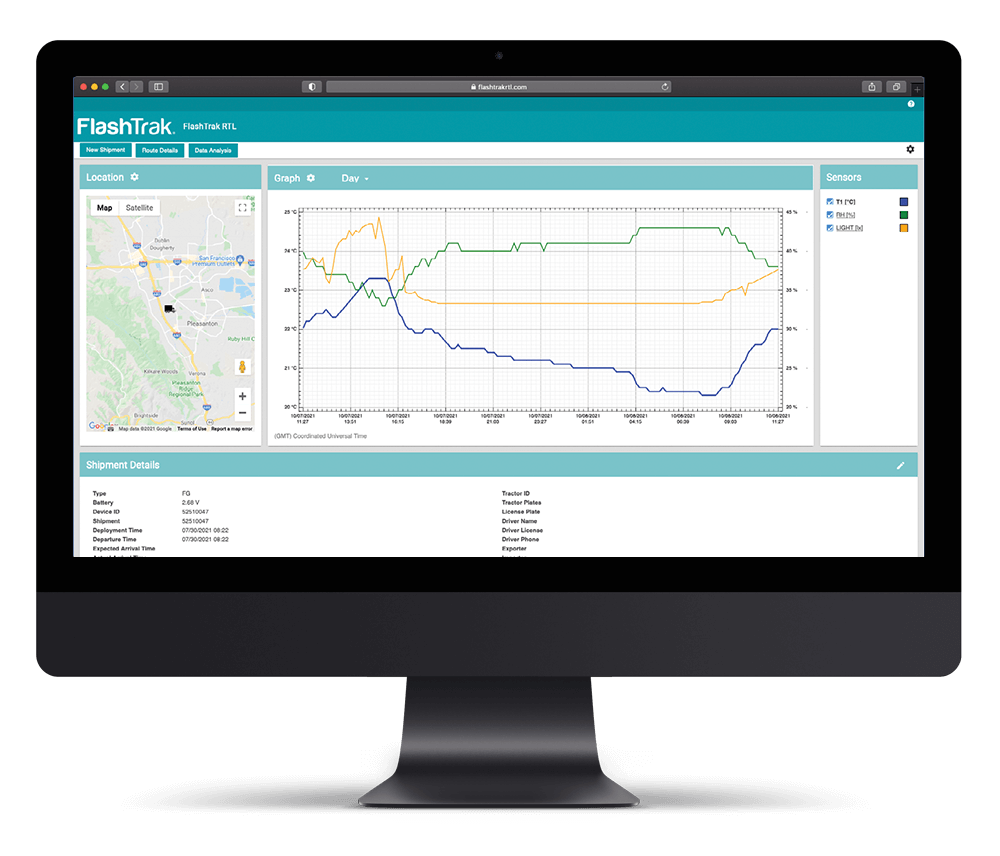Below is a list of commonly used terms in food safety.
A
Aerobic bacteria: Bacteria that need oxygen in order to live and grow.
Acceptance Criteria: A numerical or descriptive basis of acceptance.
Adhesive: A material that bonds together the surfaces of similar or different materials.
Allowable Excursions: Acceptable range in which the product temperatures can reach within a set amount of time that does not compromise the integrity of the product.
Ambient Temperature: The temperature of an outside environment.
Anaerobic bacteria: Bacteria that do not require oxygen in order to live and grow.
API: Active Pharmaceutical Ingredient
AOAC: AOAC International is a non-profit scientific association with headquarters in Gaithersburg, Maryland, USA. It publishes standardized, chemical analysis methods designed to increase confidence in results of chemical and microbiologic analyses. Government agencies and civil organizations often require that laboratories use official AOAC methods.
ASTM: American Society for Testing and Materials
Assay: A test. In pharmacology: to subject (a drug) to an analysis for the determination of its potency or composition.
ATP: Adenosine triphosphate (ATP) is the nucleotide known in biochemistry as the "molecular currency" of intracellular energy transfer; that is, ATP is able to store and transport chemical energy within cells. ATP also plays an important role in the synthesis of nucleic acids. ATP molecules are also used to store the energy plants make in cellular respiration. All organic matter gives off ATP
Audits: A professional examination of quality control and validation systems.
B
Bacteria: Bacteria are microscopic organisms, usually consisting of one cell, that lack chlorophyll (a green pigment found in plants that allows for the production of food). Except for viruses, they are the smallest living things on Earth.
Bacteriological Analytical Manual (B.A.M.): FDA's Bacteriological Analytical Manual (The BAM) is a collection of procedures preferred by analysts in U.S. Food and Drug Administration laboratories for the detection in food and cosmetic products of pathogens (bacterial, viral, parasitic, plus yeast and mold) and of microbial toxins. Except for some rapid methods listed in its Appendix 1, all these methods have been used and peer reviewed by FDA scientists as well as by scientists outside FDA. However, not all of these methods have been fully validated by collaborative studies. In some instances, collaborative studies are not possible because uniform test samples cannot be prepared (as with encysted parasites). In other instances, FDA needs to use a method before the time it takes to achieve full validation. At first (1965, Edition 1), the BAM was intended to be only a vehicle for information and standardization within FDA. However, the manual's reputation as useful spread beyond the agency. Requests for copies proliferated and it was decided to make the BAM generally available.
BAM: FDA's Bacteriological Analytical Manual (BAM) presents the agency's preferred laboratory procedures for microbiological analyses of foods and cosmetics. AOAC International published previous editions of this manual in a loose-leaf notebook format, and, more recently, on CD-ROM. This online BAM is now available to the public.
Benchmark: A point of reference from which measurements may be made.
Biofilm: A biofilm is an aggregate of microorganisms in which cells adhere to each other and/or to a surface with sticky by-products formed by these cells. Biofilm can adhere to living or non-living surfaces and can hide harmful bacteria.
Bioluminescence: Bioluminescence is the production and emission of light by a living organism.
C
Calibration: The tuning of an instrument according to a standard value.
Calibration Verification: The act of confirming that a device or instrument is properly calibrated.
CFR: Code of Federal Regulations
CFR (21) Part 11: Federal regulations stating that electronic records and signatures are considered equivalent to paper records.
Colony Forming Unit (CFU): CFU is a measure of viable (live) bacterial or fungal numbers. Unlike direct microscopic counts where all cells, dead and living, are counted, CFU measures viable cells. Results are given as CFU/mL (colony-forming units per milliliter) for liquids, and CFU/g (colony-forming units per gram) for solids
cGMP: Current Good Manufacturing Practices
Chart Recorder: An electronic instrument that records the ambient temperature of an environmental testing chamber.
Cold Chain Management: A temperature-controlled supply chain. Goods in a cold chain must be maintained throughout at a consistent temperature.
Cold Chain Product: A product that is temperature sensitive.
Cold Chain: An uninterrupted flow of a specific thermal profile throughout the manufacturing, packaging and distribution of a temperature-sensitive product.
Colorimetric assay: A test using instruments that measures the concentration of a known constituent of a solution by comparison with colors of standard solutions. These instruments are used to determine or specify colors, as by comparison with spectroscopic or visual standards.
Culture medium: A growth medium or culture medium is a liquid or gel designed to support the growth of microorganisms or cells,[1] or small plants like the moss Physcomitrella patens.[2]There are different types of media for growing different types of cells.[3]
D
Danger Zone: The temperature range from 41°F to 135°F (5°C to 57°C) at which bacteria are most likely to grow in food.
Data Logger: An in-transit temperature recorder that measures temperature during a specified time period (also called a digital data logger, data monitor, temperature data logger, in-transit temperature recorder).
Deviation: The variance from the average.
Distribution: Transfer of a product among multiple locations that may include a manufacturer, storage facility, and end user (clinic, commercial business, patient).
Distribution Process: The process by which product moves from the point of manufacturing to the end user.
Distribution Temperature: Specified temperature at which a product must be distributed.
DNA: DNA, or deoxyribonucleic acid, is the hereditary material in humans and almost all other organisms. Nearly every cell in a person's body has the same DNA.
DOT: United States Department of Transportation
Dry Ice: A refrigerant that is solid carbon dioxide, which sublimates to a gas at very cold temperatures. Dry ice is used as a pharmaceutical and food services coolant in insulated/thermal packaging.
Dunnage: Padding used to fill empty space in a shipping container.
Duration: A length of time, i.e., a 24-hour minimum post stabilization or until stabilization occurs at the specified temperature.
E
E. coli: Escherichia coli or E. coli is a Gram-negative rod-shaped bacterium that is commonly found in the lower intestine of warm-blooded organisms (humans, birds etc). Most E. coli strains are harmless, but some, such as serotype O157:H7, can cause serious food poisoning in humans, and are occasionally responsible for product recalls.
Efficacy: The ability to produce a desired outcome.
EIASee ELISA: ELISAEnzyme-linked immunosorbent assay (ELISA), also known as an enzyme immunoassay (EIA), is a biochemical technique used mainly in immunology to detect the presence of an antibody or an antigen in a sample. The ELISA has been used as a diagnostic tool in medicine and plant pathology, as well as a quality-control check in various industries.
Enterobacteriaceae: Enterobacteriaceae are a large family of gram-negative bacteria, including many familiar pathogens, such as Salmonella and E. coli.
Enterococcus: Enterococci are regular inhabitants of the bowel. The genome of E. faecalis is more than 25% exogenously acquired DNA. Enterococci are the leading cause of hospital-acquired secondary infections.
Enzymes: Enzymes are proteins that catalyze (i.e., increase the rates of) chemical reactions. At any given moment, all of the work being done inside any cell is being done by enzymes. The purpose of an enzyme in a cell is to allow the cell to carry out chemical reactions very quickly. These reactions allow the cell to build things or take things apart as needed. This is how a cell grows and reproduces.
Excursion: Deviation from a specified limit.
Excursion Limit: A defined allowable deviation from a specified limit.
External Temperature Cycle: The ambient temperature that the shipping container witnesses for each step of the transit process (packaging, warehouse, transit, etc.).
F
False Negative: A result that appears negative but fails to reveal a situation. As an example an assay test concludes that there is no prescence of Salmonella when in fact Salmonella is present is a false negative result.
False Positive: A result that is erroneously positive when a situation is normal. As an example an assay test concludes that there is the prescence of Salmonella when in fact there is not Salmonella present is a false positive result.
FDA: United States Food and Drug Administration
Fecal Coliforms: Fecal coliform bacteria are present in large numbers in the feces and intestinal tracts of humans and other warm-blooded animals, and can enter water bodies from human and animal waste. Fecal coliform by themselves are usually not pathogenic; they are indicator organisms, which means they may indicate the presence of other pathogenic bacteria.
Fluorescence: Fluorescence is luminescence that occurs where the energy is supplied by electromagnetic radiation, usually ultraviolet light. The energy source kicks an electron of an atom from a lower energy state into an "excited" higher energy state; then the electron releases the energy in the form of light (luminescence) when it falls back to a lower energy state. Examples: fluorescent lights, the red glow of rubies in sunlight.
Fluorometer: A fluorometer or fluorimeter is a device used to measure parameters of fluorescence: its intensity and wavelength distribution of emission spectrum after excitation by a certain spectrum of light. These parameters are used to identify the presence and the amount of specific molecules in a medium. Modern fluorometers are capable of detecting fluorescent molecule concentrations as low as 1 part per trillion.
Fluorogenic: Having the quality of emitting light or Fluorescence.
Foodborne Illness: Any illness or disease caused by eating or drinking contaminated food.
G
GLP: Good Laboratory Practices; according to 21 CFR Part 58, regulations to ensure quality of nonclinical laboratory studies related to safety.
Gram-negative bacteria: Gram-Negative Bacteria are simply called so because of their detection by the Gram's Stain test in which they do not retain the crystal violet color (dye) in their cell wall. The Gram-Negative bacteria cell-wall holds the pink or reddish dye once a counter stain chemical is used. There are many groups of Gram-Negative bacteria such as Cyanobacteria, Spirochaetes, Green-Sulphur and Green Non-Sulphur Bacteria and Proteobacteria etc. Out of which, proteobacteria is one of the major group of known Gram-Negative bacteria (it includes bacteria like E-coli, Salmonella, Pseudomonas, Moraxella, Helicobacter, Stenotrophomonas, Legionella, Acetic Acid Bacteria etc.)
Gram-positive bacteria: Gram-positive bacteria are those that are stained dark blue or violet by Gram staining. This is in contrast to Gram-negative bacteria, which cannot retain the crystal violet stain, instead taking up the counter stain (safranin or fuchsine) and appearing red or pink. Gram-positive organisms are able to retain the crystal violet stain because of the high amount of peptidoglycan in the cell wall. Gram-positive cell walls typically lack the outer membrane found in Gram-negative bacteria. Gram-positive organisms include Staphylococcus, Streptococcus, Enterococcus, Bacillus, Corynebacterium, Nocardia, Clostridium, Actinobacteria and Listeria.
GMP: Good Manufacturing Practices; according to 21 CFR Parts 210, 211, 600 and 610, current manufacturing practices (cGMPs) influence the manner in which biopharmaceuticals and other drugs are produced.
GRAS: Generally recognized as safe; a special status afforded by FDA to ingredients and methods that have a proven, longstanding history of causing no harm to humans or animals.
Growth medium: Growth medium - a source of nutrients in which a microorganism is placed to permit its growth, cause it to produce substances, or observe its activity under defined conditions; also called culture medium or growth medium . The medium is usually a solution of nutrients in water (nutrient broths), or a similar solution solidified with gelatin or agar.
H
HACCP: Hazard Analysis Critical Control Point – a plan of identifying foodborne hazards and implementing steps to eliminate or minimize the hazard. Many jurisdictions require food service employees to implement and document a HACCP plan.
HCPC: Healthcare Compliance Packaging Council
Heterotrophic microorganisms: Heterotrophic organisms or Heterotrophs are organisms that are not able to make their own food. They must ingest or absorb food produced by other organisms. Therefore, the heterotrophs rely on other organisms for their nutrition. Heterotrophic organisms include animals, fungi, and some single-celled protozoa (e.g., ameba, paramecia) and bacteria. While autotrophs make their own food by converting inorganic nutrients into organic forms, heterotrophs cannot do this. Heterotrophs require most nutrients in an already produced, organic form. They use these nutrients both as a source of energy and as building blocks to form cell and body parts. In a food web the heterotrophs are the consumers. There are many different types of heterotrophs in a food web, depending on what they consume.
Hydrolyzed: Refers to the act of: Hydrolysis a chemical process of decomposition involving the splitting of a bond and the addition of the hydrogen cation and the hydroxide anion of water.
I
Immunology: Immunology is the study of our protection from foreign macromolecules or invading organisms and our responses to them. These invaders include viruses, bacteria, protozoa or even larger parasites. In addition, we develop immune responses against our own proteins (and other molecules) in autoimmunity and against our own aberrant cells in tumor immunity.
Incandescence: Incandescence is light from heat energy. If you heat something to a high enough temperature, it will begin to glow. When an electric stove's heater or metal in a flame begin to glow "red hot", that is incandescence. When the tungsten filament of an ordinary incandescent light bulb is heated still hotter, it glows brightly "white hot" by the same means. The sun and stars glow by incandescence.
Internal performance data In house testing data performed throughout the product development
IPIC: International Pharmaceutical Industry Congress
IQ/OQ/PQ: Installation Qualification, Operational Qualification, Performance Qualification
ISO 9001:2000: The International Organization for Standards' Quality Management System for accreditation of quality control for manufacturers.
ISPE: International Society for Pharmaceutical Engineering
ISTA: International Safe Transit Association
ISTA 5B: ISTA's focused simulation guide for thermal performance testing of temperature controlled packaging and thermal boxes.
J
JCAHO: Joint Commission on Accreditation of Healthcare Organizations. An organization that grants accreditation to hospitals meeting its standards for patient care.
K
L
Light: Light is a form of energy. To create light, another form of energy must be supplied. There are two common ways for this to occur, incandescence and luminescence.
Listeria: Listeria monocytogenes is a Gram-positive rod-shaped bacterium. It is the agent of listeriosis, a serious infection caused by eating food contaminated with the bacteria. The disease affects primarily pregnant women, newborns, and adults with weakened immune systems. Listeriosis is a serious disease for humans; the overt form of the disease has a mortality greater than 25 percent. The two main clinical manifestations are sepsis and meningitis. Meningitis is often complicated by encephalitis, a pathology that is unusual for bacterial infections.
Luminescence: Luminescence is "cold light" that can be emitted at normal and lower temperatures. In luminescence, some energy source kicks an electron of an atom out of its lowest energy "ground" state into a higher energy "excited" state; then the electron returns the energy in the form of light so it can fall back to its "ground" state. With few exceptions, the excitation energy is always greater than the energy (wavelength, color) of the emitted light.
M
Methicillin Resistant Staphylococcus Aureus (MRSA): Methicillin-resistant Staphylococcus aureus (MRSA) is a bacterium responsible for several difficult-to-treat infections in humans. It may also be called multidrug-resistant Staphylococcus aureus or oxacillin-resistant Staphylococcus aureus (ORSA). MRSA is, by definition, any strain of Staphylococcus aureus that has developed resistance to beta-lactam (class of antibiotics) antibiotics which include the penicillins (methicillin, dicloxacillin, nafcillin, oxacillin, etc.) and the cephalosporins (class of beta-lactam antibiotics0. MRSA is especially troublesome in hospitals and nursing homes where patients with open wounds, invasive devices and weakened immune systems are at greater risk of infection than the general public.
MKT: Mean Kinetic Temperature. The USP (United States Pharmacopeia defines MKT as the “single calculated temperature at which the total amount of degradation over a particular period is equal to the sum of the individual degradations that would occur at various temperatures.
MSDS: Material Safety Data Sheet
N
NAAT: A nucleic acid test, often called a "NAT" test, (or nucleic acid amplification test - "NAAT") is a biochemical technique used to detect a virus or a bacterium. These tests were developed to shorten the window period, a time when a patient has been infected and when they show up as positive by antibody tests.
NIST: National Institute of Standards and Technology, a government agency that sets standards (including temperature).
Non-Conformance: A failure to conform or act in accordance with established standards.
NSF: NSF International, a not-for-profit, non-governmental organization, is the world leader in standards development, product certification, education and risk-management for public health and safety.
Nucleic acid test: See NAAT
O
P
Pallet Containers: Thermal shipping containers, or pallet shippers, designed to hold an entire pallet.
Pathogen: An agent of disease. A disease producer. The term pathogen most commonly is used to refer to infectious organisms. These include bacteria (such as staph), viruses (such as HIV), and fungi (such as yeast).
PCR: The polymerase chain reaction (PCR) is a scientific technique in molecular biology to amplify a single or a few copies of a piece of DNA across several orders of magnitude, generating thousands to millions of copies of a particular DNA sequence. PCR technique is often used in NAAT, to allow for rapid copying of DNA.
Peroxidasa Enzyme Enzyme that breaksdown hydrogen peroxide in cells. Foods containing peroxidase include radishes, turnips, cabbage, cauliflower, horseradish, uncooked broccoli, cucumbers, mushrooms, green beans, artichokes, melons and potatoes.
PDA PCCDG: PDA Pharmaceutical Cold Chain Discussion Group
PDA: Parenteral Drug Association
pH: A measurement of the acid or alkaline content of an item.
Picomole: A unit of substance equal to one trillionth (10-12) of a mole. The mole is a unit of measurement for the amount of substance or chemical amount. It is one of the base units in the International System of Units, and has the unit symbol mol. The mole is defined as the amount of substance that contains as many elementary entities (e.g., atoms, molecules, ions, electrons) as there are atoms in 12 g of the isotope carbon-12 (12C).
Potentially Hazardous Foods (PHF): Foods that need temperature control because they support the rapid growth of microorganisms or the formation of toxins.
PTM AOAC Performance Tested Methods. The AOAC's method of validation testing
Q
QA: Quality Assurance
Qualification Report: A formally written or electronically produced record detailing a qualification study.
Qualification (Validation): Testing that provides reasonable assurance that the qualified product or process will produce similar results under stated conditions.
R
Ramp: A programmed change from one set-point to another.
Reagent: A reagent is a substance that, because of the reactions it causes, is used in analysis and synthesis. A reagent is a "substance or compound that is added to a system in order to bring about a chemical reaction, or is added to see if a reaction occurs.
S
Salmonella: Salmonella bacteria are rod-shaped, flagellated, Gram stain-negative, and are known to cause disease in humans, animals, and birds (especially poultry) worldwide. The two major diseases caused by Salmonella spp. are gastroenteritis and typhoid fever (typhoid and paratyphoid fevers) in humans.
Sanitization: The process of reducing microorganisms and their spores to generally safe levels through the use of chemical, heat or both.
Shelf Life: The length of time that a product or device maintains its effectiveness.
Shipping: The process of transporting a package from one location to another.
Shipping System: The insulated shipping container and its internal thermal packaging components (refrigerants, buffering materials, dunnage, etc.).
SOP: Standard Operating Procedures
SPE: Society for Pharmaceutical Engineering
Stability: Often refers to the ability of a product to remain efficacious under varying temperature/time exposures.
Storage Temperature: The temperature at which a product is stored.
Substrate: In biochemistry, a substrate is a molecule upon which an enzyme acts. Enzymes catalyze chemical reactions involving the substrate(s). In the case of a single substrate, the substrate binds with the enzyme active site, and an enzyme-substrate complex is formed. The substrate is transformed into one or more products, which are then released from the active site. The active site is now free to accept another substrate molecule. In the case of more than one substrate, these may bind in a particular order to the active site, before reacting together to produce products.
T
Temperature Abuse: Whenever a temperature-sensitive commodity is exposed to a temperature either above or below its safe temperature zone.
Temperature Probe: A device that measures the temperature of a specified environment.
Temperature-Sensitive Product: A product for which stability is impacted by temperatures outside a prescribed range (e.g., vaccine).
Thermal Mapping: Defining the temperatures witnessed throughout many points in the container over time. Thermal mapping of the environment refers to collection of the data necessary to model the ambient temperatures witnessed by a shipment as it moves throughout the distribution process.
Thermocouple: A device with a pair of wires of dissimilar metals (e.g., copper and iron) that accurately measures temperature.
Tolerance: The acceptable range for a specified measurement.
Total Organisms: Total Organisms gives a quantitative idea about the presence of microorganisms such as bacteria yeast and mold in a sample. To be specific, the count actually represents the number of colony forming units (cfu) per g (or per ml) of the sample.
U
UN: United Nations - 3373 package labeling specifications, which are adhered to by Cold Chain Technologies' diagnostic kits.
USDA: United States Department of Agriculture
USP: United States Pharmacopeia
V
Validation (Qualification): A study that provides documented evidence that assures that a specific process or system will consistently meet predetermined specifications.
W
WHO: World Health Organization
X
Y
Z









